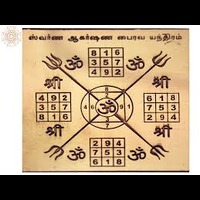
Sacred Geometry Unveiled: Exploring the Mystical Yantra
Sacred geometry, a profound concept found across cultures and spiritual traditions, manifests in various forms such as mandalas, labyrinths, and perhaps most intriguingly, yantras. Among these, the yantra stands as a pinnacle of symbolic representation and spiritual potency, deeply rooted in ancient wisdom and cosmic understanding.
The Essence of Yantra
At its essence, a yantra is a geometric diagram imbued with spiritual meaning and intention. Derived from the Sanskrit words “yan” (meaning instrument) and “tra” (meaning liberation), yantras are tools for liberation from the mundane and a means to connect with the divine. These intricate designs are not mere artworks but intricate maps of cosmic energies and the divine realms.
Yantras typically consist of geometric shapes, including triangles, circles, squares, and lotuses, arranged in precise patterns around a central point. Each element and arrangement within a yantra holds profound symbolism, representing cosmic principles, energies, and deities. For instance, the Sri Yantra, one of the most revered yantras in Hinduism, symbolizes the unity of masculine and feminine energies and is believed to encompass the entire cosmos within its sacred geometry.
Origins and Evolution
The origins of yantras can be trace back to ancient India, where they were first develope as tools for meditation, spiritual practice, and invoking divine energies. Over millennia, their use spread across various spiritual traditions, including Hinduism, Buddhism, and Jainism, each imbuing yantras with unique meanings and methodologies.
In Hinduism, yantras are closely associated with specific deities and cosmic energies. They are use in rituals and meditation practices to invoke the presence and blessings of these deities, as well as to attain spiritual goals such as enlightenment and liberation. The intricate patterns and geometric precision of yantras reflect the orderliness and harmony of the universe, guiding practitioners on their spiritual journey.
The Geometry of Divinity
Sacred geometry forms the foundation of yantra design. It encompasses geometric principles and patterns that resonate with universal truths and cosmic energies. The shapes used in yantras, such as triangles and circles, are not arbitrary. But are chosen for their inherent symbolic meanings and vibrational qualities.
Triangles, for example, symbolize the trinity of creation, preservation, and destruction – the fundamental forces of the cosmos according to Hindu philosophy. Circles represent wholeness, unity, and eternity, while squares signify stability and the material world. The precise arrangement and proportions of these shapes within a yantra create a harmonious. And potent energy field that practitioners can tap into through meditation and ritual.
Practical Applications and Rituals
Yantras are not merely passive symbols but active tools for spiritual practice and transformation. They are consecrated through rituals performed by qualified practitioners. Which imbue them with divine energies and make them potent instruments for meditation and spiritual growth.
Practitioners use yantras for a variety of purposes, including meditation, healing, and manifestation. By meditating on a yantra, individuals can focus their minds and connect with higher realms of consciousness. The intricate patterns and symbols within the yantra serve as points of concentration, helping practitioners enter deep states of meditation and unlock profound insights into the nature of existence.
Meditation and Spiritual Insight
Meditation with yantras is a transformative practice that facilitates spiritual growth and self-discovery. The geometric patterns within the yantra act as portals to higher consciousness. And allowing practitioners to transcend the limitations of the ego and experience unity with the divine.
The process of meditating on a yantra involves focusing one’s attention on the center of the yantra and gradually expanding outward to encompass the entire design. This process helps quiet the mind, dissolve distractions, and awaken inner wisdom and intuition. Through regular practice, individuals can cultivate greater clarity, peace, and spiritual insight in their lives.
Yantras in Contemporary Context
In contemporary society, yantras continue to hold relevance as tools for spiritual seekers and practitioners. Their timeless wisdom and universal appeal transcend cultural boundaries, making them accessible to people of diverse backgrounds and beliefs.
Yantra meditation and practices have found resonance in alternative healing modalities, yoga studios, and mindfulness retreats around the world. They are often used alongside other spiritual practices to promote holistic well-being, inner peace, and alignment with higher consciousness.
Conclusion
Sacred geometry, as manifested through the mystical yantra, offers a profound pathway to spiritual awakening and enlightenment. Through its intricate patterns and symbolic representations, the yantra provides a tangible means for individuals. To connect with the divine and explore the mysteries of existence.
In exploring the mystical yantra, we delve into the depths of ancient wisdom and cosmic understanding. Uncovering timeless truths about the nature of reality and our place within it. Whether used for meditation, healing, or spiritual growth. Yantras continue to inspire and guide seekers on their journey towards wholeness, harmony, and ultimate liberation.
As we unveil the secrets of sacred geometry through the mystical yantra, we embark on a journey of discovery and transformation, transcending the boundaries of the material world and awakening to the infinite possibilities of the spiritual realm.


